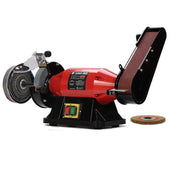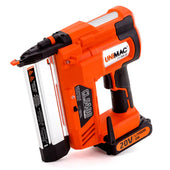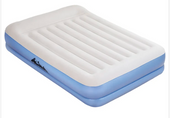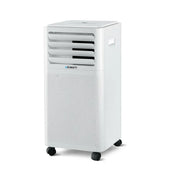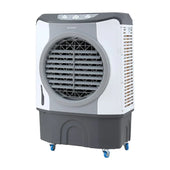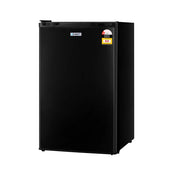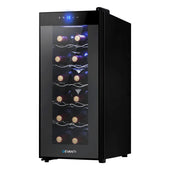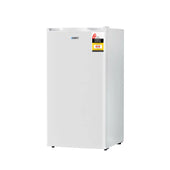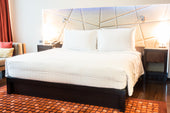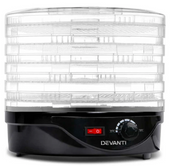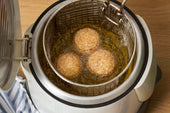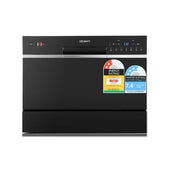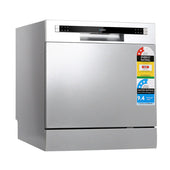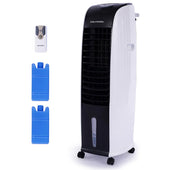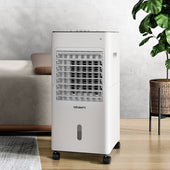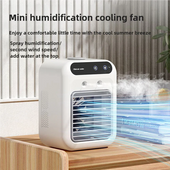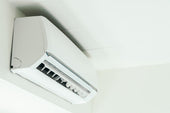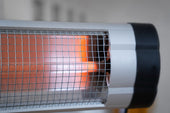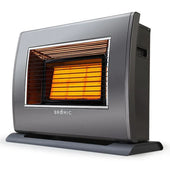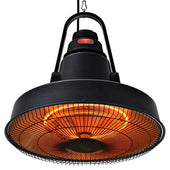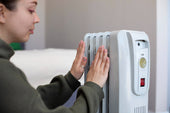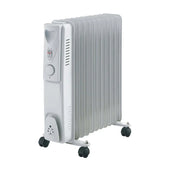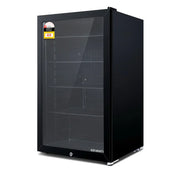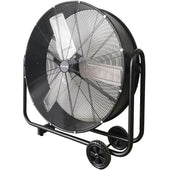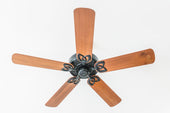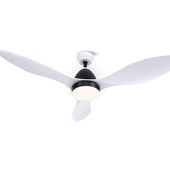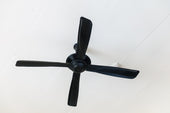Introduction: Leather vs Performance Fabric Recliners
When selecting a recliner for family spaces, the choice often boils down to leather or performance fabric. Each material offers distinct advantages and drawbacks suitable for different household needs. Leather recliners are admired for their timeless elegance, durability, and easy maintenance, while performance fabric recliners excel in versatility, comfort, and affordability.
Understanding these materials' unique qualities helps families make informed decisions based on lifestyle, aesthetics, and practicality. Parents may prioritise resilience against spills, while individuals might focus on fabric texture. This section provides an in-depth comparison, shedding light on factors like wear, care, and suitability for active households.
Understanding the Basics: What is a Leather Recliner?
A leather recliner is a type of seating furniture specifically designed to offer adjustable reclining positions for enhanced relaxation, crafted with leather upholstery. Leather used for recliners can be genuine, bonded, or faux, each offering varying levels of quality, feel, and durability. These recliners often feature cushioned support, ergonomic designs, and mechanisms that allow users to customise their seating angle.
During Days, Leather upholstery is known for its luxurious appearance, supple texture, and exceptional durability. It resists wear and tear, making it suitable for families seeking long-lasting furniture. Additionally, leather recliners are easy to clean, resistant to stains, and maintain their aesthetic appeal over time.
What is a Performance Fabric Recliner?
A performance fabric recliner is a seating option upholstered with specially engineered fabrics designed to resist wear and tear while offering versatility and style. These fabrics are crafted to withstand daily use, spills, stains, and fading, making them ideal for high-traffic, family-friendly environments. Renowned for their durability, performance fabrics provide long-term value without compromising on aesthetics or comfort.
Key Features:
- Stain Resistance: Treated surfaces repel spills, making cleanup easier.
- Durability: Fabrics are designed to resist fraying, ripping, and everyday use.
- Fade Protection: Many include UV protection to preserve vibrant colours.
- Comfort: Soft textures ensure a luxurious feel without sacrificing practicality.
Performance fabric recliners often cater to diverse style preferences, balancing functionality with visual appeal.
Comfort and Feel: A Comparison for Everyday Use
When comparing leather and performance fabric recliners for comfort, each material offers distinct experiences tailored to varying preferences. Leather recliners exude a luxurious, smooth texture that adapts to body temperature over time, becoming softer with prolonged use. However, they may initially feel cooler to the touch, which can be refreshing in summer but brisk in winter.
Performance fabric recliners provide a cosier, more breathable surface, ideal for long lounging sessions. These fabrics are often softer out of the box and resist sticking to the skin during humid weather. Additionally, they are less prone to sagging and maintain their feel over extended periods. Families should consider tactile preferences when choosing.
Durability and Longevity: Which Recliner Material Stands the Test of Time?
When examining the longevity of recliner materials, leather and performance fabrics show distinct characteristics. Leather, particularly top-grain or full-grain varieties, is renowned for its durability. It naturally resists wear, retains its look with proper care, and can develop a rich patina over time. However, it is sensitive to scratches and may fade when exposed to direct sunlight.
On the other hand, performance fabrics are engineered to resist stains, fading, and general damage. They are designed to endure heavy use, offering excellent durability for families with pets or children. While they may not develop the character of leather, they maintain consistent appearance throughout their lifespan.
Maintenance and Cleaning: Practical Considerations for Families
When assessing maintenance for families, leather recliners are appealing due to their smooth surface, which resists spills and stains. A quick wipe with a damp cloth typically suffices for routine cleaning. They also benefit from conditioning treatments to prevent cracking and maintain suppleness over time.
Performance fabric recliners, while less prone to cracking, may require more rigorous cleaning—vacuuming to remove dust and crumbs followed by blotting spills with specialised fabric cleaners. Many performance fabrics offer stain resistance, but they may retain odours if not adequately cleaned.
For families with pets or young children, scratch resistance and durability in leather may outweigh fabric's cosier texture.
Aesthetics and Style: Matching Your Recliner to Family Spaces
Choosing a recliner involves more than comfort—its aesthetics must complement the family space. Leather recliners offer a sleek, sophisticated look, often suited to modern or classic interior designs. They come in neutral shades like black, beige, and brown, effortlessly blending with various decor styles. Performance fabrics, on the other hand, offer a broader range of textures, patterns, and vibrant colours, ideal for eclectic or contemporary settings.
To enhance visual harmony, one should consider existing furniture and colour schemes. For families with open-concept living spaces, coordinating fabric or leather tones with rugs, curtains, or cushions creates continuity. Thoughtful material choices ensure the recliner enriches the room's overall appeal.
Cost Analysis: Budget-Friendly vs Premium Choices
When evaluating recliners, costs can vary widely between leather and performance fabric options.
- Leather Recliners: These tend to lean towards the premium price range. Genuine leather recliners, known for their durability and timeless appeal, often require a significant upfront investment. Maintenance costs, such as leather conditioners, can also add up over time. However, their longevity may offset the higher initial price.
- Performance Fabric Recliners: These are generally more affordable, making them a popular choice for budget-conscious families. While they lack the luxurious feel of leather, they provide solid performance, especially in terms of stain resistance. Cleaning and maintenance are typically less expensive, further enhancing their cost-effectiveness.
Transitioning between these categories, families must weigh upfront costs against long-term value to suit their lifestyle.
Allergy and Health Considerations: Which is Safer for Families?
When evaluating recliners for their impact on health and allergies, materials like leather and performance fabric each offer unique attributes. Leather, being a non-porous material, generally resists the accumulation of allergens such as dust mites, pet dander, and mould. It is also easy to wipe clean, reducing exposure to irritants. However, certain chemicals used in leather tanning may cause sensitivities in some individuals.
Performance fabrics often feature stain resistance and hypoallergenic coatings, which can minimise allergic reactions. These fabrics are typically breathable, limiting moisture build-up that encourages mould. Sensitive skin may benefit from fabric’s softer texture. Families should, however, verify the absence of chemical treatments that might trigger allergies.
Pet and Kid-Friendly Features: Leather vs Performance Fabric
Recliners for homes with pets and children require durability and ease of maintenance. Leather offers scratch resistance, making it less prone to damage from pet claws and active children. Additionally, spills and stains can be wiped off easily due to its non-porous surface. However, it may show wear or fade with prolonged exposure to scratches or sharp objects.
Performance fabric excels in versatility, offering stain-resistant treatments that withstand food, drink, and dirt. Many options are hypoallergenic, making them ideal for sensitive households. Its soft, cushioned texture appeals to growing kids but may absorb liquids, requiring prompt cleaning to avoid stains.
Temperature Regulation: Comfort Across Seasons
When evaluating temperature regulation, leather recliners and performance fabric recliners offer distinct experiences. Leather, being a natural material, tends to absorb heat in warm weather and can feel cool in colder months. However, prolonged exposure to direct sunlight or high temperatures may cause it to feel sticky or overly warm, which could reduce comfort for users.
Performance fabrics, on the other hand, are often designed with breathability in mind. These materials allow for better air circulation, making them less likely to trap heat. They excel in maintaining a more consistent temperature, regardless of the season, and are less reactive to environmental changes.
Additionally, leather may require added care or cooling aids in summer to remain comfortable, while performance fabrics generally adapt to varying climates without intervention. For families seeking year-round comfort, these differences in temperature regulation can be a significant consideration when making a choice.
Environmental Impact: Sustainability of Leather vs Performance Fabric
The environmental sustainability of both leather and performance fabric recliners varies greatly. Leather production involves the processing of animal hides, which often requires energy-intensive tanning methods and the use of chemical treatments. This can contribute to water pollution and high carbon emissions. Moreover, it depends heavily on livestock farming, a known contributor to deforestation and methane emissions.
In contrast, performance fabrics are usually synthetic, derived from petroleum-based materials such as polyester. While they avoid the ethical concerns of animal use, their production consumes non-renewable resources and generates microplastics, which can harm marine ecosystems. Recycling options are limited for both, posing long-term waste challenges.
Resale Value: Long-Term Investment Benefits
When considering the resale value of recliners, both leather and performance fabric options offer distinct advantages. Leather recliners are often viewed as a luxury item, which can significantly enhance their second-hand market value. The timeless appeal of genuine leather, combined with its durability, allows it to retain value over years, making it an attractive option for resale.
On the other hand, performance fabric recliners may appeal to practical buyers seeking affordable, family-friendly furniture. While their resale value may not match that of leather, their stain resistance and ease of maintenance are compelling selling points. Ultimately, resale potential depends on the condition and material quality.
Expert Tips for Choosing the Right Recliner for Your Home
When selecting a recliner for your home, it is important to assess your lifestyle and space requirements. Consider the recliner's size to ensure it fits seamlessly within your living area. Measure available space beforehand to avoid crowding.
Look for supportive features such as ergonomic designs, lumbar support, and adjustable reclining positions. Families should prioritise durable materials, keeping in mind high traffic or young children. Leather offers ease of cleaning, while performance fabric is resistant to stains and wear.
Style is equally vital; choose colours and textures that complement your home aesthetic. Always test recliners for comfort and functionality to ensure long-term satisfaction.
Conclusion: Finding the Best Recliner Material for Families
When considering the ideal recliner material for families, practical factors such as durability, comfort, and maintenance stand out in importance. Leather recliners offer a sophisticated appearance, easy cleaning, and strong resistance to spills, making them suitable for households with pets or small children. Performance fabrics, on the other hand, deliver superior softness, a wide variety of colour options, and advanced stain resistance technologies, appealing to families prioritising cosiness and budget-friendly choices.
Families should weigh lifestyle factors like regular usage, potential messes, and aesthetic preferences to determine which material aligns with their needs. Both options provide valuable benefits, with choices largely dependent on individual priorities.



